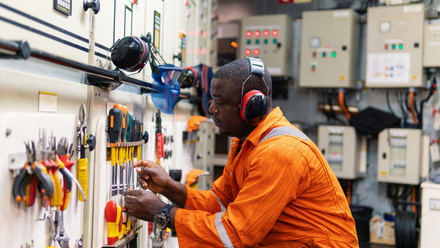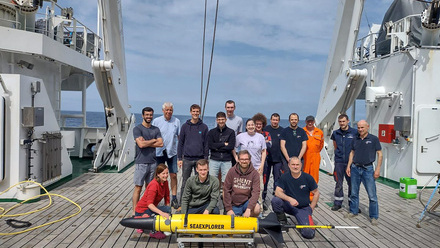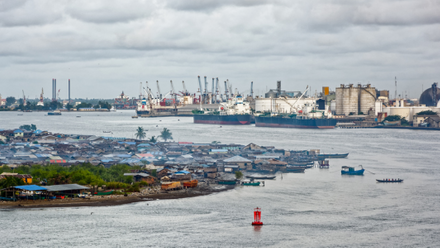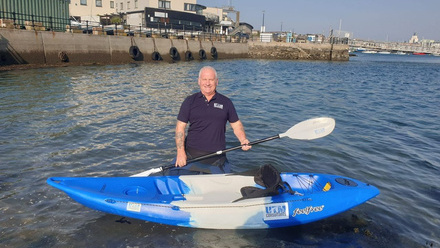The main issues facing global maritime skills development
High costs, undefined training quality and variable global standards are among the challenges to developing the highest marine and maritime skill levels.
Commonwealth Secretariat head of oceans and natural resources, Dr Nicholas Hardman-Mountford, emphasises there is growing awareness of the importance of ocean governance and sustainable blue economies, but the opportunities to study these varies around the world.
“Globally, there is an increasing recognition of the undeniable importance of the global ocean economy, which was valued conservatively at US$1.5 trillion in 2010 and is expected to double in value by 2030, according to the OECD,” he says.
“We have also seen a stronger grasp of the ocean-climate nexus and the significance of marine biodiversity to overall life on the planet, as well as more attention on international treaties governing the ocean, such as the high seas biodiversity treaty agreed earlier this year.”
Variable level of opportunity
However, while noting that “education and training in maritime and marine affairs can be invaluable for countries to navigate these spaces”, he feels such opportunities can be “few and far between” in most countries.
“Ocean literacy in general, and specifically education on ocean sciences, maritime policy and ocean-based economy sectors such as shipping, port logistics, fisheries and aquaculture, varies massively between countries and regions,” he explains.
“In the Maldives, marine sciences are included as part of the high school curriculum nationally – which is not seen even in other developed economies.
“However, in most countries, training opportunities can be few and far between. Adequate training and upskilling are essential for countries to effectively respond to emerging trends, changing technologies and new developments in international maritime law and policy, so this is an area that the Commonwealth fully supports through its work under the Commonwealth Blue Charter.”
But who pays?
Sue Harland, a senior lecturer at the Warsash Maritime School of Solent University, laments the age-old issue of affordability.
“Some companies will pay for the training of their crew, regardless of rank and will sponsor right through to master level, where others don’t,” explains Harland.
“For example, my brother-in-law was a deck hand when my sister met him (she was second mate) and she encouraged him to get qualified as an officer and then master. But they paid for him to go to college, not his employer. I paid for my own qualifications after my cadetship, as did my husband, but I know lots of people who were sponsored by their companies; it just depended on who you worked for.”
Harland observes that some companies will recruit cadets knowing there is SMarT (Support for Maritime Training) funding, but with no job at the end of the training.
“At Warsash, the vast majority of our students are sponsored by their companies, but we do have people who work ad hoc for agencies that pay themselves [for] short courses, and we have cohorts of students who are on the experienced seafarer pathway to their first CoC [Certificate of Competency] that pay for themselves in both the commercial and superyacht sectors.
“Also consider Filipino seafarers, who legally are only allowed to be contracted to a company for one voyage, so that will have an impact on whether companies will spend money on training them as potentially there is no return on their investment.”
Virtual training needs to be consistent
Captain Orlando Allard, Dean of the Faculty of Engineering and Technology of the Universidad Santa Maria La Antigua says a lack of onboard Internet access to take virtual courses also has a negative impact.
“Course openings are always available – in some cases courses do not open because there are not enough students subscribed,” he says.
“There is usually a required low and high number of students per course to make it financially and academically effective.
“Many shipping companies are taking care of the training of their own workforce, both ashore and aboard ships because of the introduction of new technologies and very strong competition, which requires a well-qualified workforce.
“Some of the bigger companies provide training ashore before seafarers join their respective ships, whilst others do so at the end of their shift, when going ashore for time off.”
In reference to the issue of the expense of training versus personal benefit, Allard adds: “Pay in the maritime industry, although not regulated, is quite standard and except for technical courses (licence advancement), additional courses do not usually imply more pay.”
Inconsistency in standards
International Association of Maritime Security Professionals chief learning officer Allan McDougall believes one of the biggest issues in the sector is the accepted variance of training standards between jurisdictions.
“Where we have countries that operate more laxly (be it on safety standards or in other regulated areas), they begin to attract those companies that focus more specifically on the bottom line than those that take a more balanced and responsible approach,” he says.
“For example, in some countries you can only be issued your seafarer book when you have completed your mandated STCW [Standards of Training, Certification, and Watchkeeping] training; in others, you can pay a fee [for it].”
McDougall is consequently calling on the International Maritime Organisation (IMO), which established and enforces the STCW, to provide greater oversight over its member states.
“There is a low benchmark for training, and that is the STCW (with some other supporting courses) that forms the baseline that is supposed to be met. While that baseline is established, different flag states do not enforce it similarly.
“There is no high watermark as of yet. Some countries or even companies require their personnel to have more training than others.”
McDougall is also concerned that embracing technological advancements does not come at the expense of the fundamentals in training.
“As we add new requirements into the frame, there is a temptation to focus on that new technology and to let some of the basic seafarer skills slide.
“The challenge here is finding that balance point. Do you increase the length of training, keep it the same, or reduce it further to reduce pressures in the industry [potentially creating safety risks]?
“I would propose that the first two may be considered, but the latter would be beyond what should be considered.”
If this article has inspired you to learn more, you can join the Ocean Governance Special Interest Group (SIG) or Human Element Working Group.






